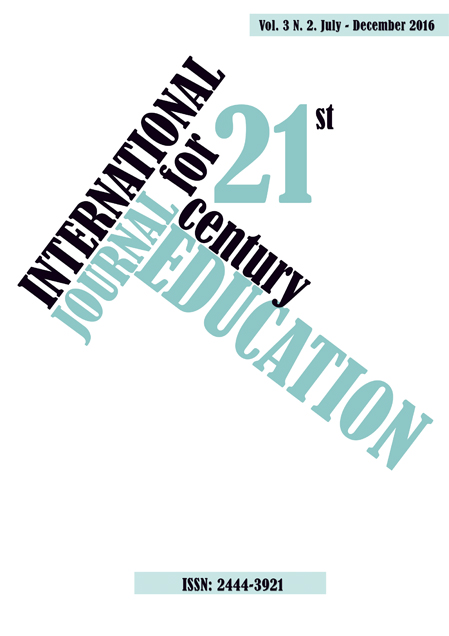PLE & PLN for language learning and teaching: a case study
Contenido principal del artículo
Resumen
Recent developments in learning technologies are creating a significant shift in the educational experience. The paper aims at exploring the potential of PLEs (Personal Learning Environments) and PLNs (Personal Learning Networks) through the description of a case study relating to an online training initiative: an innovative answer to the “lifelong competency” management approach to language teaching. The case study refers to an online international initiative promoted in 2012 addressed to teachers, trainers and educators from all over the world, passionate about language learning with the use of technologies.
The authors of this contribution planned and moderated a five-week training session within “EVO 2012” (Electronic Village Online), offering a free opportunity to discuss and share ideas, practices, experience through a Moodle platform, in synch meetings with international experts and asynchronous working tools.
The main aim was to promote greater awareness of this topic, guiding teachers and trainers to the effective exploitation of the potential of PLE and PLN in EFL classes.
Descargas
Detalles del artículo
Bibliografía
Attwell, G., (2007), Personal Learning Environments-the future of eLearning? eLearning papers, 2(1), 1–7.
Buchem I., Attwell G., Torres R., (2011), Understanding Personal Learning Environments: Literature review and synthesis through the Activity Theory lens. pp. 1-33, Proceedings of The PLE Conference 2011, 10th - 12th July 2011, Southampton, UK.
Chatti, M. A., Agustiawan, M. R., Jarke, M., & Specht, M., (2010), Toward a Personal Learning Environment Framework, International Journal of Virtual and Personal Learning Environments, 1(4), 66-85.
Couros, A., (2010), Developing Personal Learning Networks for Open & Social Learning, in Veletsianos, G. (Ed). Emerging Technologies in Distance Education. Edmonton: Athabasca University Press.
Downes, S., (2010), New Technology Supporting Informal Learning, Journal of Emerging Technologies in Web Intelligence, 2(1), 27-33.
Drexler, W., (2010), The networked student model for construction of personal learning environments: Balancing teacher control and student autonomy, Australasian Journal of Educational Technology, 26(3), 369-385.
Milligan, C., Johnson, M., Sharples, P., Wilson, S., & Liber, O., (2006), Developing a reference model to describe the personal learning environment, In W. Nejdl & K. Tochtermann (Eds.), Innovative Approaches for Learning and Knowledge Sharing - First European Conference on Technology Enhanced Learning, ECTEL 2006 (pp. 506-511). Berlin/Heidelberg: Springer.
Olivier, B. and Liber, O., (2001), Lifelong Learning: the need for portable Personal Learning Environments and supporting interoperability standards, JISC Center for Educational Technology, Interoperability Standards, Bolton Institute.
Shaikh Z.A., Khoja S. A. (2012), Role of Teacher in Personal Learning Environments, Digital Education Review – Number 21, June 2012 - http://greav.ub.edu/der/
Stanley G., Thornbury S., (2013), Language Learning with technology, Cambridge University Press.
Walker A., White G., (2013), Technology Enhanced Language Learning, Oxford University Press.
Wild, F., Mödritscher, F. & Sigurdarson, S., (2008), Designing for Change: Mash-Up Personal Learning Environments, eLearning Papers, 9/July 2008.

